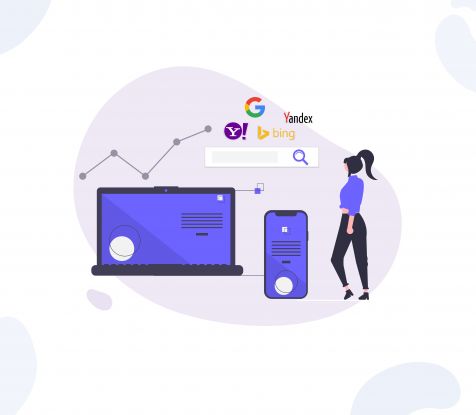Harsh Sagar talks about Online Marketing
What Affects Your SEO Score And How Can You Improve It In 3 Steps
Oct 07, 2022
When a user searches for a keyword relevant to your website, your website must be accessible and optimised. But how d...
Aug 24, 2020
by Harsh Sagar

A podcast, a portmanteau of the words “iPod” and “broadcast”, is essentially a pre-recorded or a live-streamed audio broadcast. Podcasts include discussions around broad topics, ranging from business battles to British history. Although originating in the early 2000s, podcasts are now popular across the world.
There is a tremendous growth in the number of podcast listeners in India. Based on a PwC report, India’s monthly podcast audience, defined as people who listen to a podcast at least once a month, grew 57.6% year-on-year from 25.4 million in 2017 to 40 million by 2018. However, according to a LinkedIn survey, in India, only 24% of respondents listened to a podcast, compared to 39% in more matured markets such as the USA. This indicates a growing and untapped market for podcasts in India.
As a form of content marketing too, podcasts have immense potential. Based on the Content Marketing Institute’s benchmarking of content formats used, podcasts comprised only 21% of all formats, compared to others such as social media (95%), blog posts (89%), and email newsletters (81%).
Especially in the B2B context, podcast marketing can work wonders. B2B marketing podcasts usually have a Q&A format in which industry leaders are interviewed. In this way, by providing good content to listen to, brands can also position themselves as thought leaders. This helps build trust with customers. Podcasts can also be curated to ensure different topics touch upon different stages in the customer purchase cycle. This increased engagement can then be leveraged to encourage audiences to drop their leads or to visit the business website. Also, podcasts are mainly consumed during the listener’s free time (unlike say a blogpost or a case study) such as while driving or while working out, leading to better engagement. The engaged audience for podcasts is already present. The previous LinkedIn survey reports that 44% of the people surveyed who knew what a podcast was and who listened to a podcast, held senior management roles.
Before even beginning work on the podcast content, marketers should start by defining their most ideal and profitable customers. To achieve a high ROI on the massive efforts that go into producing a podcast, it makes sense to target prospective leads who are similar to the most profitable customers. So, create content that may appeal to the business’ ideal customers.
This chosen content needs to be relevant and informative, but should also not lose out on entertaining the audience. GE came up with an award-winning podcast series which has stories that involve elements of science fiction, combined with a subtle messaging around the current innovation that is happening within the company. It certainly gives an entertaining twist to what could otherwise have been mundane B2B content marketing.
The next question that will need to be answered is how long should the podcast be? While there is no right answer, on an average, a podcast is usually 43 minutes long. However, if businesses are targeting busy decision-makers, the duration can be much shorter.
Once all of the above is in place, figure out an interesting name and a sleek logo for the podcast. Also purchasing a domain name becomes necessary at this stage, as it will be needed to establish an online presence (website, social media handles, and pages, etc.).
Basic equipment required to record a podcast are a computer and a microphone. A computer is used to record and then upload the mp3 file of the podcast. It is best practice to use a microphone which is separate from that of a computer. USB microphones are good for an individual speaker, but XLR microphones should be used in case of multiple speakers.
Other miscellaneous tools that can be used include an audio interface (device to convert the mic’s analog signals to digital signals for the computer), a mixer (similar to the audio interface box but with more controls), windscreen (to reduce plosive sounds), headphones and mic stands. Initial set-ups don’t need to be expensive and can be done in under Rs. 20,000.
To edit the podcast, free editing softwares such as Audacity and Garageband (available on Mac OS) can be used. Experts can use the subscription-based Adobe Audition.
The generated podcast needs to be put on a hosting service to get listed on directories such as iTunes. Other podcast services such as SoundCloud, BuzzSprout, and Fireside, are also worth exploring.
The podcast space is just heating-up in India. Using podcasts for B2B marketing, businesses have the opportunity to not just grab new customers, but also to create some noteworthy content along the way. If your brand is considering podcast marketing and needs a team of experts to help, contact Envigo, a full-service digital marketing agency.


Harsh Sagar talks about Online Marketing
Oct 07, 2022
When a user searches for a keyword relevant to your website, your website must be accessible and optimised. But how d...


Harsh Sagar talks about Online Marketing
Jan 12, 2021
Is it really possible to share one - just one - infallible tip with regard to creating great digital marketing solutions? Not really.